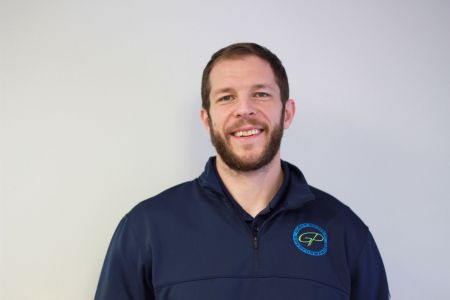THOR: BFR w/ Sean

Gallagher Performance Interview
As always, it was great to get a chance to catch up with Sean, and chat rehab and performance. Sean has incorporated Personalized Blood Flow Restriction (BFR) into his practice for over a year. We sat down for an old-school phone conversation to unpack what his experience has been since adding BFR to his practice and to loosely cover some of the current research surrounding the technique.
Sean learned this technique straight from the man, Johnny Owens, himself. Owens has been applying BFR rehabilitation training clinically since 2012 and credits the modality with significant strength recovery in more than 300 patients. He also has been published extensively in the peer-reviewed literature and his work has been featured on 60 Minutes, Time magazine, NPR, the Discovery Channel and ESPN.
Sean says he had the good fortune of using the technique for a while before officially taking the course which allowed him to absorb the instruction with a much more finely-tuned ear as to how he could implement BFR as effectively as possible.
It had been several years since I personally had taken the course, so I asked Sean if there was anything “new” that Owens was really excited about. Here are several of his insights:
The main difference between the Delfi unit that Owens uses and all other models is its personalized cuff pressure.
This is a valid comment when you look at the literature. Many times, the study is forced to standardize the pressure. (PMID: 33196300) Some of the work studied pressure at 110 in the thigh. (Trust me, this is low.)
There is a new study that will be published soon looking at BFR and the impact on femur fracture.
The concept of cell swelling or ischemic pre/postcondition (IPC) is a topic of conversation. This is the strategy to take the limb to 100% occlusion. The limb remains passive under 100% contraction for 5 minutes. After the 5-minute contraction, there is an equal reperfusion time of 5 minutes. This cycle is repeated two more times for a total of three rounds.
Personally, I haven’t used this strategy much because I was not quite sure where this application was most useful. In learning more about its application, I have a couple of conclusions.
There are two windows in which to apply IPC:
Acute: 2-4 hours before the desired physiological adaptation (before performance)
Why: Analgesic effects, improved ion channel signaling (similar to warming up before competition)
2nd window: 24-72 hours before the desired physiological adaptation (recovery)
Why: Reduce the oxidative stress of training through a systemic response (interleukin pathways 1,6,10, vascular endothelial growth factor [VEGF], exercise metabolites like creatine kinase [CK]), blunt the damage from exercise-induced delayed onset muscle soreness (DOMS), return to baseline performance after 72 hours https://www.owensrecoveryscience.com/learn-more/category/podcasts/
There does seem to be some new information looking at very low level muscle activation under 100% occlusion, so there is plenty of upcoming research in this area.
After one year in the BFR game, I asked Sean what the biggest takeaways are. He was quick to say that in his practice he is doing a lot of post-operative rehabilitation and this technique was on a short list of “game changing” techniques in such scenarios. More specifically, adding BFR has helped restore mass to a post-operative limb much faster.
Chasing 70% load to maximize adaptation in a rehab setting is difficult and this technology bridges that gap better than anything on the market. It has had an impact on his patient education approach because his clients are now connecting the dots between exercise and performance much better and earlier in the rehab process. He went on to comment that the best long-term outcomes in most any pain or injury study always involve some degree of exercise.
I asked him flat-out to explain what, exactly, about BFR is so valuable. His response was memorable and to the point.
“It is the maximal result with the least amount of effort.” In his rehab model, Sean lives in the 8-12 repetition range on most all exercises looking for a total volume of somewhere in the 30 rep range. This approach, however, may lead to too much orthopedic stress when optimizing load.
Using BFR is a great way to reduce the local orthopedic stress but create a large amount of metabolic stress that will lead to the desired adaptation. It checks the two key boxes of both strength and metabolic conditioning.
Some Sean’s favorite BFR exercises include squats, lunges, and hinge patterns. Favorite hamstring-specific BFR moves include sliders, seated leg curls, bench bridges, and Romanian deadlifts (RDL). His early-stage post-op knee go-to exercises include quad sets, leg extensions, leg presses, and straight leg raises (SLR).
In our conversation, we talked about the great Michal Truc quote that “injury comes from load strain, speed strain, or fatigue strain.” We need to consider addressing all three aspects of this during the injury recovery and reconditioning process. BFR is a modality that can improve qualities across all three aspects of strain reduction.
